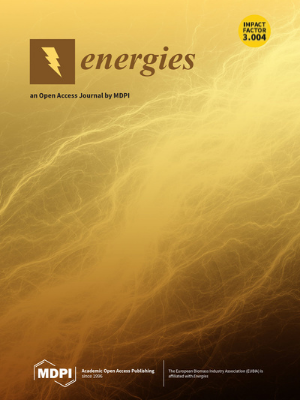为未来内河运输建立自主电力推进驳船模型
IF 3.2
4区 工程技术
Q3 ENERGY & FUELS
引用次数: 0
摘要
国际贸易持续增长,导致通过航空和海运等运输枢纽的货物流量增加。此外,内陆船队老化,需要通过建造新船进行更新,这为采用现代运输技术提供了机遇。自主驳船可以在特定地区的中心港口和较小的卫星港口之间运输散装货物和集装箱货物,使货物能够分散到更广阔的区域。为自主驳船配备先进的传感器(如激光雷达)、可在可见光和热红外条件下工作的计算机视觉系统,并采用先进的路径查找和合作算法,可使驳船只需接受远程监督即可自主运行。本研究的目的是探讨自主电力推进驳船在内河运输中的潜力。鉴于各种新政策为清洁运输设定了新的宏伟目标,对高效和可持续运输解决方案的需求日益增长,本研究旨在开发一种电力推进混合动力内河驳船,并将其与传统柴油动力驳船进行比较。研究方法包括创建内河航道 IV 级电动驳船的仿真模型,该模型配备了先进的传感器和自主控制系统。驳船的航行通过多代理系统进行管理,由进化算法确定安全通过路线。这项研究还利用专有的网络船舶交通模拟器,以真实的内河船舶记录路线为基础,进行自主导航研究。然后,利用 OpenModelica 软件包中的数学模型,对船舶交通模拟得出的驳船航线能耗进行了研究。研究结果表明,所建议的混合推进系统的燃料消耗和二氧化碳排放量减少了 16%,同时发动机运行时间缩短了 71% 以上。研究结果可为自主电力推进驳船的可行性和效率提供有价值的见解,从而为内河水道运输的未来发展提供潜在帮助。本文章由计算机程序翻译,如有差异,请以英文原文为准。
Modeling of an Autonomous Electric Propulsion Barge for Future Inland Waterway Transport
International trade is continuously rising, leading to an increase in the flow of goods passing through transportation hubs, including air and sea. In addition, the aging fleet of inland vessels necessitates renewal through the construction of new vessels, presenting opportunities for the adoption of modern transport technologies. Autonomous barges can transport bulk and containerized cargo between the central port of a specific region and smaller satellite ports, enabling the dispersal of goods over a wider area. Equipping autonomous barges with advanced sensors, such as LIDAR, computer vision systems that operate in visible light and thermal infrared, and incorporating advanced path finding and cooperation algorithms may enable them to operate autonomously, subject only to remote supervision. The purpose of this study is to explore the potential of autonomous electric propulsion barges in inland waterway transport. Given the increasing demand for efficient and sustainable transport solutions as a result of various new policies, which have set new ambitious goals in clean transportation, this study aims to develop a proposition of an electric propulsion hybrid drive inland waterway barge, and compare it to a conventional diesel-powered barge. The methodology involves the creation of a simulation model of an inland waterway class IV electric barge, equipped with advanced sensors and autonomous control systems. The barge’s navigation is managed through a multi-agent system, with evolutionary algorithms determining a safe passage route. This research also utilizes a proprietary networked ship traffic simulator, based on real inland vessel recorded routes, to conduct the autonomous navigation study. The energy consumption of the barge on a route resulting from the ship traffic simulation is then examined using the mathematical model using the OpenModelica package. As a result of the study, the proposed hybrid propulsion system achieved a 16% reduction in fuel consumption and CO2 emissions, while cutting engine operation time by more than 71%. The findings could provide valuable insights into the feasibility and efficiency of autonomous electric propulsion barges, potentially helping future developments in inland waterway transport.
求助全文
通过发布文献求助,成功后即可免费获取论文全文。
去求助
来源期刊

Energies
ENERGY & FUELS-
CiteScore
6.20
自引率
21.90%
发文量
8045
审稿时长
1.9 months
期刊介绍:
Energies (ISSN 1996-1073) is an open access journal of related scientific research, technology development and policy and management studies. It publishes reviews, regular research papers, and communications. Our aim is to encourage scientists to publish their experimental and theoretical results in as much detail as possible. There is no restriction on the length of the papers. The full experimental details must be provided so that the results can be reproduced.
 求助内容:
求助内容: 应助结果提醒方式:
应助结果提醒方式:


